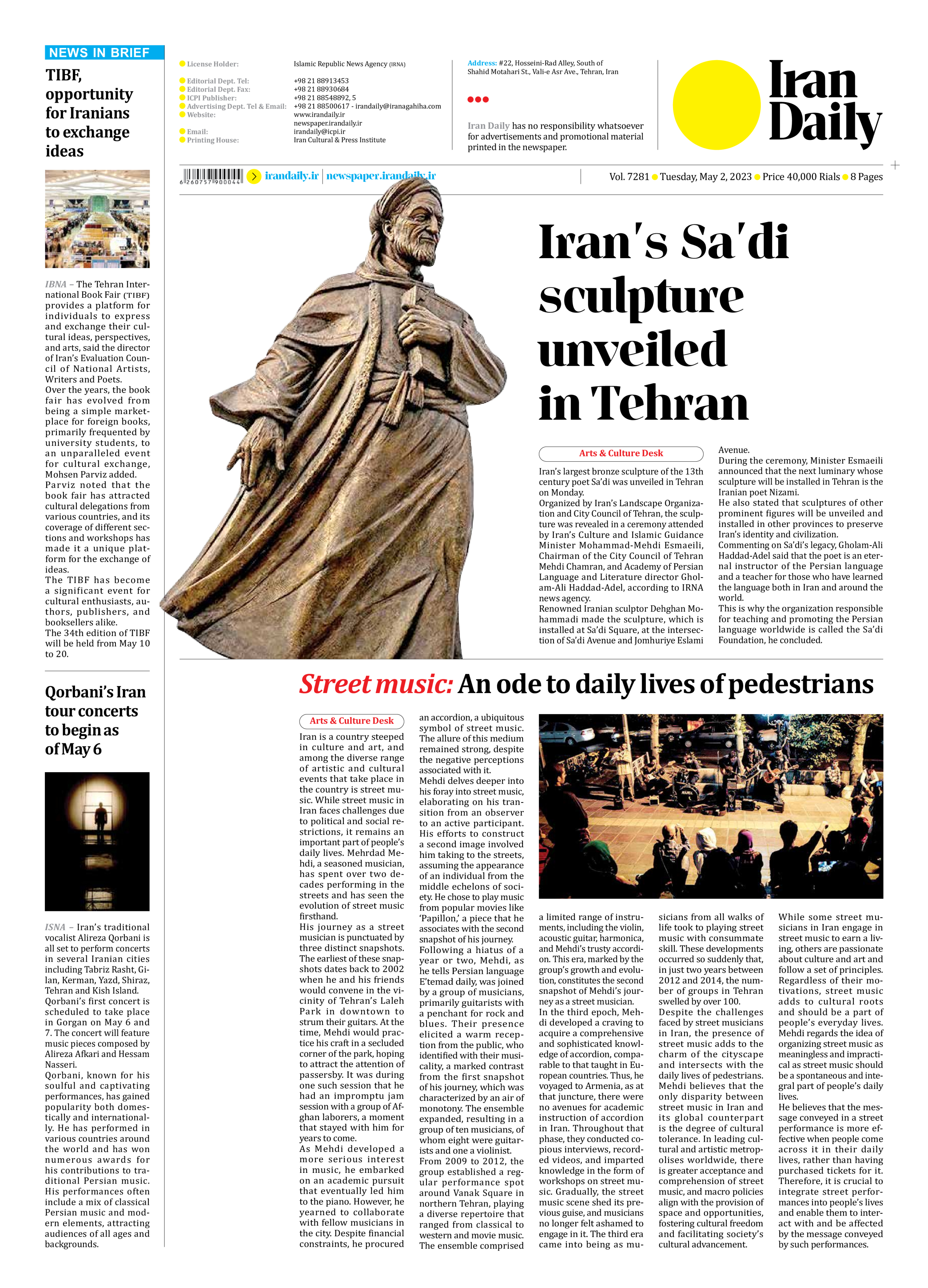
Street music: An ode to daily lives of pedestrians
Iran is a country steeped in culture and art, and among the diverse range of artistic and cultural events that take place in the country is street music. While street music in Iran faces challenges due to political and social restrictions, it remains an important part of people’s daily lives. Mehrdad Mehdi, a seasoned musician, has spent over two decades performing in the streets and has seen the evolution of street music firsthand.
His journey as a street musician is punctuated by three distinct snapshots. The earliest of these snapshots dates back to 2002 when he and his friends would convene in the vicinity of Tehran’s Laleh Park in downtown to strum their guitars. At the time, Mehdi would practice his craft in a secluded corner of the park, hoping to attract the attention of passersby. It was during one such session that he had an impromptu jam session with a group of Afghan laborers, a moment that stayed with him for years to come.
As Mehdi developed a more serious interest in music, he embarked on an academic pursuit that eventually led him to the piano. However, he yearned to collaborate with fellow musicians in the city. Despite financial constraints, he procured an accordion, a ubiquitous symbol of street music. The allure of this medium remained strong, despite the negative perceptions associated with it.
Mehdi delves deeper into his foray into street music, elaborating on his transition from an observer to an active participant. His efforts to construct a second image involved him taking to the streets, assuming the appearance of an individual from the middle echelons of society. He chose to play music from popular movies like ‘Papillon,’ a piece that he associates with the second snapshot of his journey.
Following a hiatus of a year or two, Mehdi, as he tells Persian language E’temad daily, was joined by a group of musicians, primarily guitarists with a penchant for rock and blues. Their presence elicited a warm reception from the public, who identified with their musicality, a marked contrast from the first snapshot of his journey, which was characterized by an air of monotony. The ensemble expanded, resulting in a group of ten musicians, of whom eight were guitarists and one a violinist.
From 2009 to 2012, the group established a regular performance spot around Vanak Square in northern Tehran, playing a diverse repertoire that ranged from classical to western and movie music. The ensemble comprised a limited range of instruments, including the violin, acoustic guitar, harmonica, and Mehdi’s trusty accordion. This era, marked by the group’s growth and evolution, constitutes the second snapshot of Mehdi’s journey as a street musician.
In the third epoch, Mehdi developed a craving to acquire a comprehensive and sophisticated knowledge of accordion, comparable to that taught in European countries. Thus, he voyaged to Armenia, as at that juncture, there were no avenues for academic instruction of accordion in Iran. Throughout that phase, they conducted copious interviews, recorded videos, and imparted knowledge in the form of workshops on street music. Gradually, the street music scene shed its previous guise, and musicians no longer felt ashamed to engage in it. The third era came into being as musicians from all walks of life took to playing street music with consummate skill. These developments occurred so suddenly that, in just two years between 2012 and 2014, the number of groups in Tehran swelled by over 100.
Despite the challenges faced by street musicians in Iran, the presence of street music adds to the charm of the cityscape and intersects with the daily lives of pedestrians. Mehdi believes that the only disparity between street music in Iran and its global counterpart is the degree of cultural tolerance. In leading cultural and artistic metropolises worldwide, there is greater acceptance and comprehension of street music, and macro policies align with the provision of space and opportunities, fostering cultural freedom and facilitating society’s cultural advancement.
While some street musicians in Iran engage in street music to earn a living, others are passionate about culture and art and follow a set of principles. Regardless of their motivations, street music adds to cultural roots and should be a part of people’s everyday lives. Mehdi regards the idea of organizing street music as meaningless and impractical as street music should be a spontaneous and integral part of people’s daily lives.
He believes that the message conveyed in a street performance is more effective when people come across it in their daily lives, rather than having purchased tickets for it. Therefore, it is crucial to integrate street performances into people’s lives and enable them to interact with and be affected by the message conveyed by such performances.







